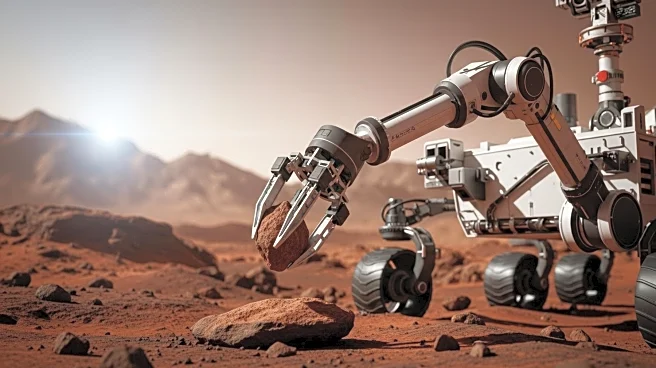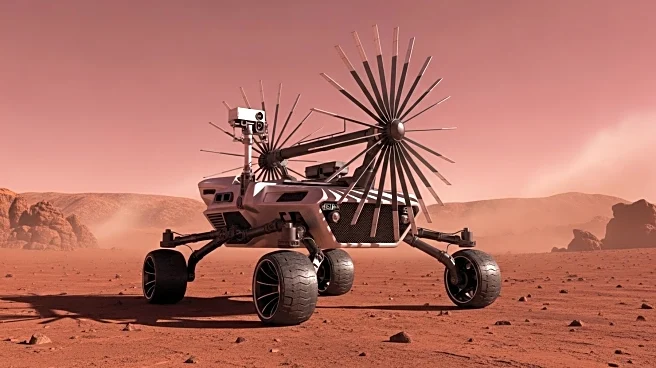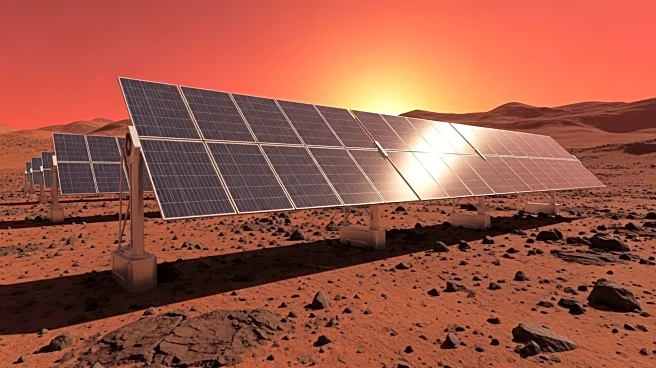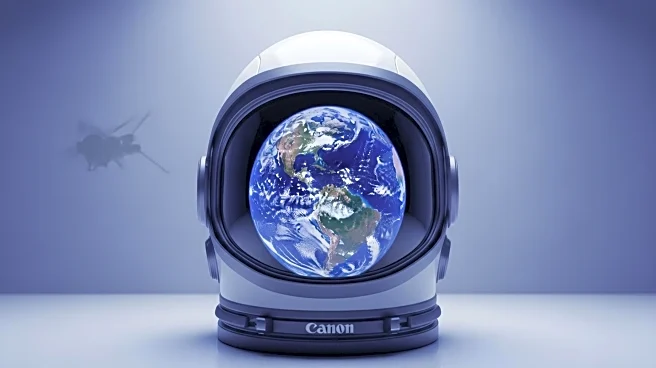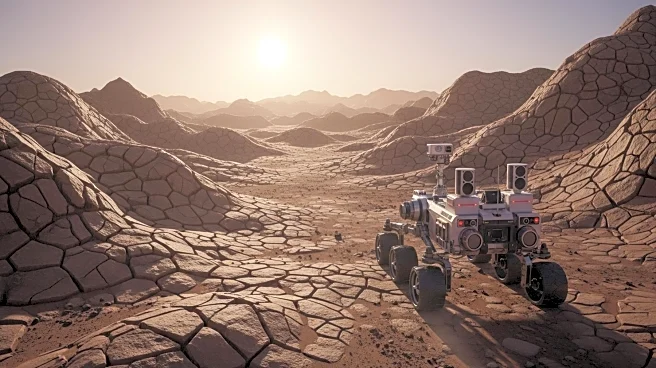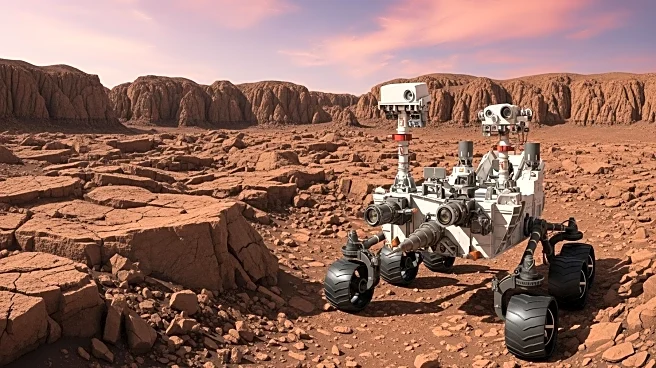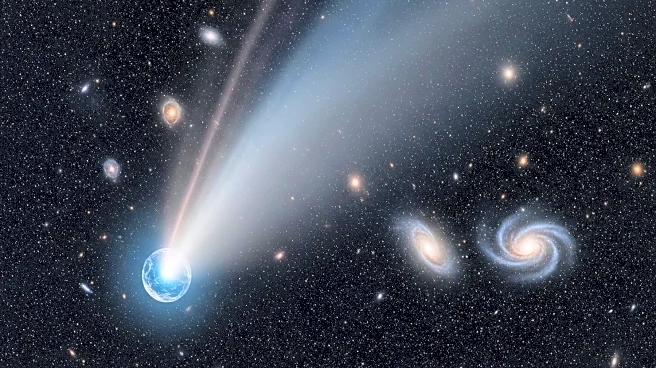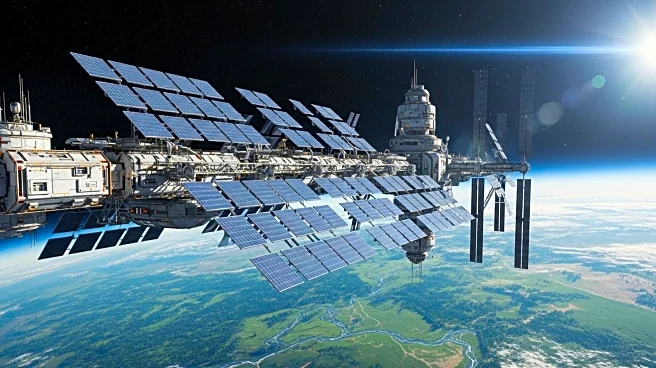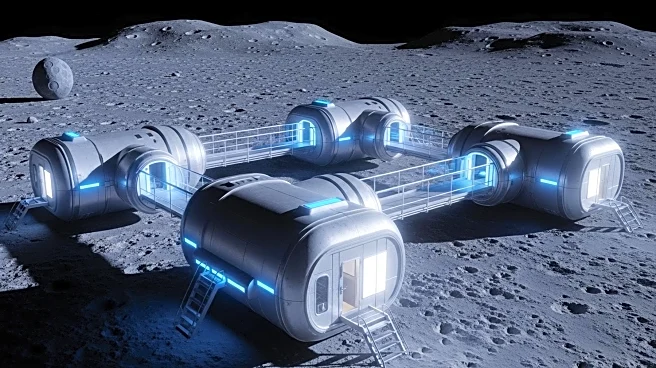What's Happening?
NASA's Curiosity rover is currently navigating a complex terrain on Mars, focusing on a region known as the boxwork. The rover is exploring ridges and hollows, specifically targeting areas named 'Laguna Escondida' and 'Laguna Socompa' for potential drilling sites. The mission involves using various scientific instruments, including MAHLI, APXS, ChemCam, and Mastcam, to study the geological features and atmospheric conditions. The rover's activities are timed with the end of the Martian cloudy season, which is characterized by water-ice clouds that will soon give way to the dusty season, affecting visibility and atmospheric conditions.
Why It's Important?
The exploration conducted by Curiosity provides critical insights into Mars' geological history and atmospheric dynamics. Understanding the planet's surface and climate patterns is essential for future manned missions and potential colonization. The data collected helps scientists assess the planet's habitability and prepare for the challenges posed by its environment. The transition from the cloudy to the dusty season offers a unique opportunity to study atmospheric changes, which can inform the design of future missions and technologies needed to withstand Martian conditions.
What's Next?
As the dusty season approaches, Curiosity will continue its scientific observations, focusing on dust-related phenomena such as dust devils. The rover will also proceed with its search for suitable drilling sites to further analyze the Martian surface. These activities will contribute to a deeper understanding of Mars' environmental cycles and support the planning of upcoming missions, including those aimed at human exploration.
Beyond the Headlines
The ongoing research by Curiosity not only advances our knowledge of Mars but also enhances our understanding of planetary science as a whole. The mission's findings could have implications for studying other celestial bodies with similar atmospheric conditions. Additionally, the technological advancements and methodologies developed for this mission may be applicable to Earth-based research and other space exploration endeavors.

